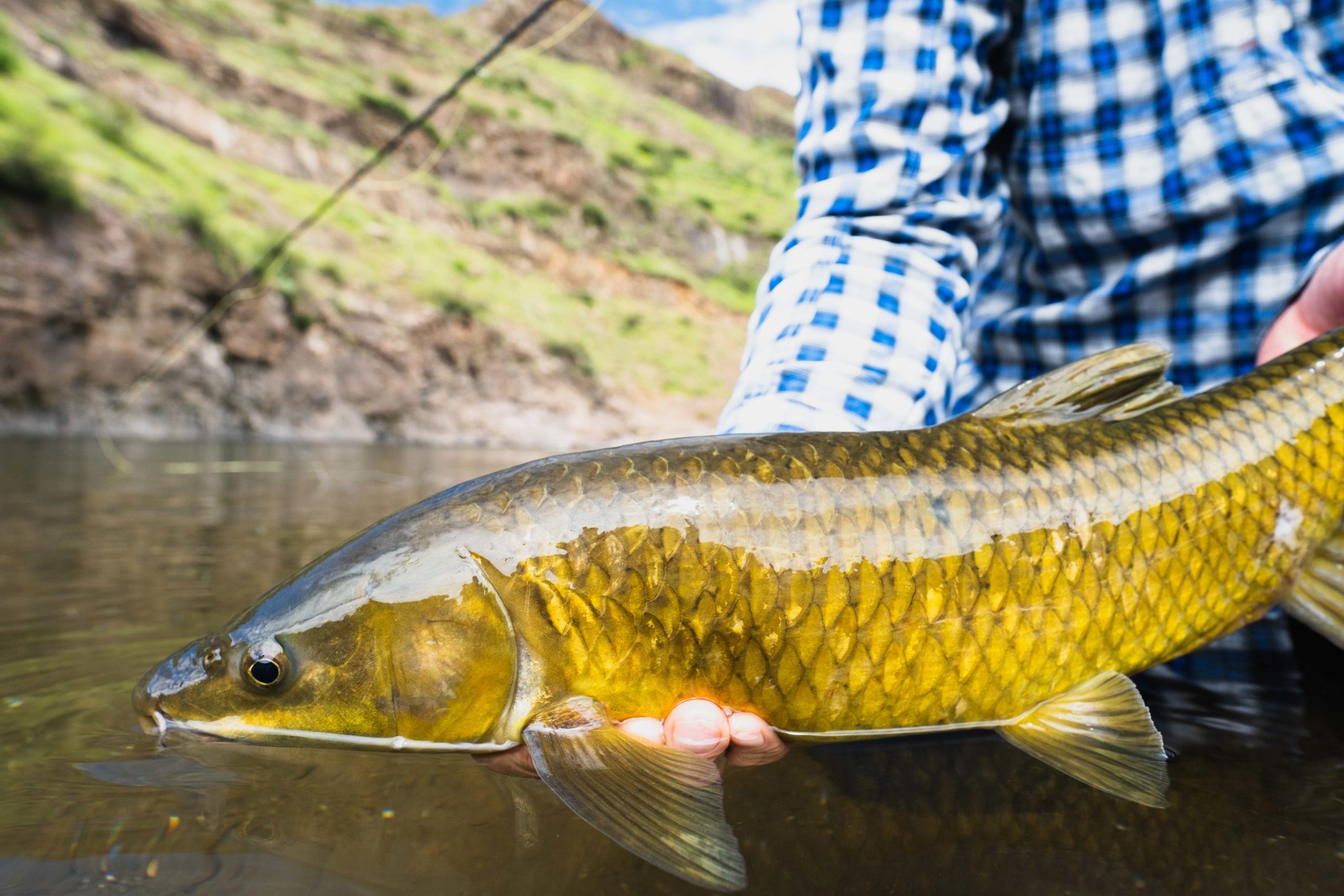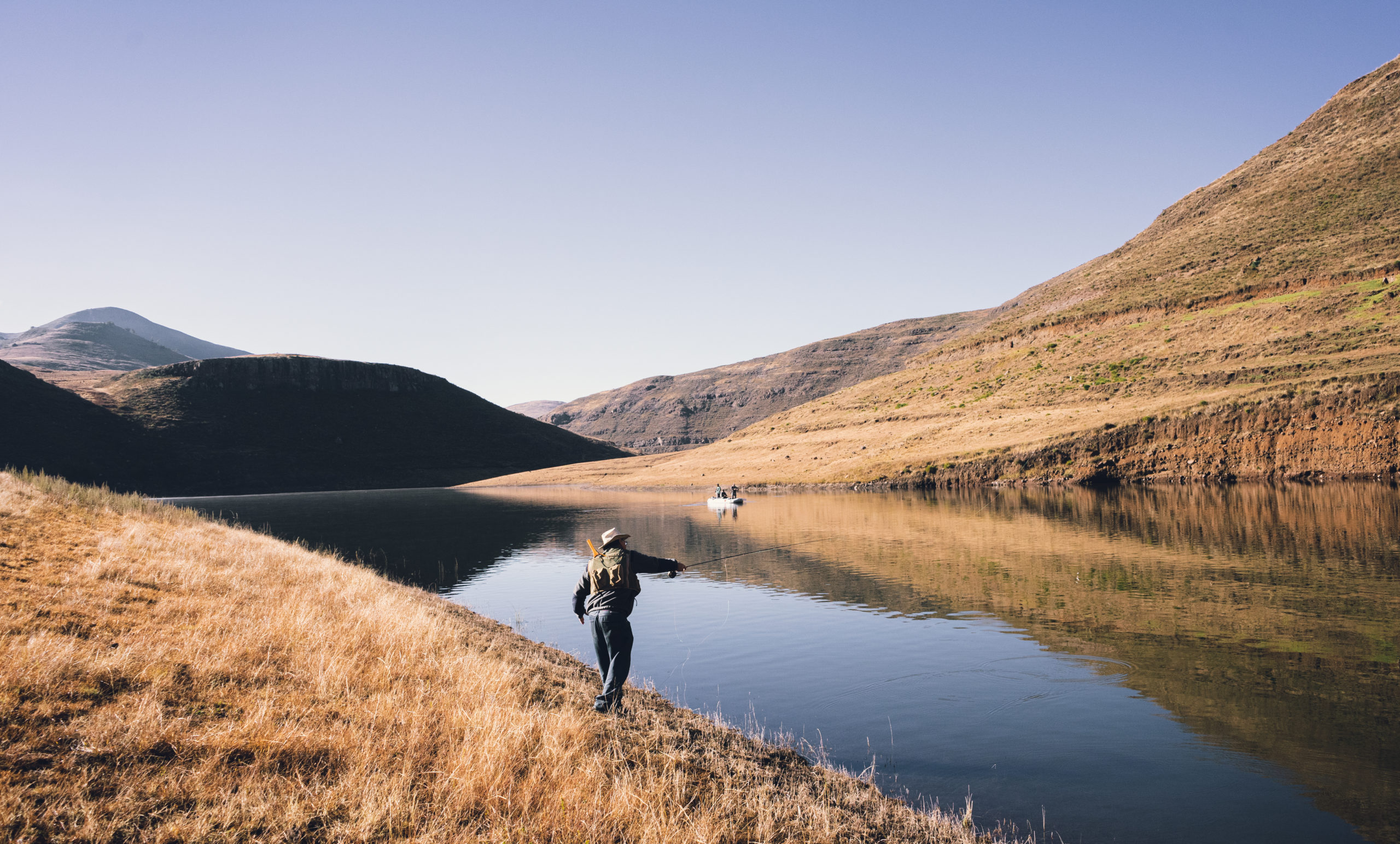Breaking Barriers for Livelihoods Creation among Herd-boys in Lesotho
The Hunt for the Ray-finned Smallmouth
August 21, 2023

Smallmouth yellowfish from Bokong River in Makhangoa village
One of the most breath-taking experiences of the deep waters is the fishing boat adventures for water voyagers. The live connection with the water creatures when casting the line, brings a whole new connection to wildlife exploration and interaction with nature’s own. The intelligence and benevolence of wildlife below water is inexplicable in many ways. The ability to detect prey and danger, hunt and manoeuvre are exquisite. There is however a huge experiential difference between fishing boat at sea and in-person handline or barehand fishing offered in the Kingdom of Lesotho. The live interaction provides for a soul-fulfilling connection between humans and other living species, based on respect. One such is the Smallmouth Yellowfish of the ray-finned family named Labeobarbus aeneus by scientists. The yellowfish adventures in Lesotho are a bit distinct from other fish species due to the desired environment by the L. aeneus (clear-flowing waters, sandy bedrocks etc). It is therefore in this light that stringent measures to protect this elegant economic treasure can never be overemphasised. The practice of overfishing, livelihood and economic activities that threaten life in water are critical. By extension too, the precarious nature of Life under Water can have wider secondary impacts on people and livelihood. This is perfectly exemplified by the socio-economy of herdboys around rivers and dams. What is their impact? How can negative consequences of their activities be mitigated. What are their positive contributions to Life in Water? And how could their contribution be augmented?
The Hunt
Herdboys in Lesotho are mostly located in the rural territories of the country and the highlands where livestock is kept in large numbers. This is where most of the country’s natural resource still lie in large measure ranging from flora and fauna, diverse types of grass, birds, and other types of wildlife. We should acknowledge their ability to endure harsh weather conditions and treacherous topography that they reside in all year round. This capability is unique. The herd-boys of this Kingdom are also considered the custodians of kingdom’s wealth by taking care of wool and mohair. Wool and mohair together account for over 50% of agricultural exports in Lesotho and this contribution has to be applauded. It is however important to note that, the herd-boys’ interaction with the natural resources in either positive or negative way, is to the high extend crucial to the country’s biodiversity. Being alone in the mountains with little or no law enforcement around them, the legal frameworks that protect the natural resources become insignificant. It is common for herd-boys to practice uncontrolled burning of pastures, destroying the rich biodiversity of the highlands, killing the natural habitats of wild animals and vegetation. Burning pastures and rangelands contributes to soil being eroded into river systems and dams, hence reducing the fish’s natural habitat and the overall diversity of habitats. Overgrazing and overharvesting of the natural resources play a key role in creating an imbalance in the biodiversity ecosystem. The variation in terrestrial and aquatic ecosystems has a negative impact in the food chain. A clear example would be the disappearance of smallmouth yellowfish in Sehong-hong river in the gorge of the Matsoaing region in Mokhotlong district. This loss may have been caused by several factors but overhunting and overharvesting should never be overlooked. THE HUNT has been major over the years. How can we rescue the situation?
Hunter Hunted
With livelihoods creation focused on skills training, the hunter (herd-boy) will see the natural resources as an economic opportunity that requires self-induced protection. The introduction of the smallmouth yellowfish as a delicacy to be harvested for livelihoods creation may yield positive results in its protection. A question would be, would this be beneficial in the first iteration or scaling of the UNDP planned experimentation on biodiversity protection? Responsible consumption and sustainable production patterns as well as protection of smallmouth yellowfish habitat shall in no doubt go a long way in behavioural change among herd-boys. Lesotho Highlands Development Authority partnered with Tourette Fishing to create a community beneficiation initiative that includes catch and release fly fishing in Makhangoa which has influenced the communities around this initiative to take responsibility to protect the natural setting in this area. This ray-finned L. aeneus thrives well in the Bokong river and nearby villages around Makhangoa. Is it possible for the same model to work for other resources? For instance, the straw platting using mountain broom grass, garlands of lily grass etc to create commercial crafts. This is yet to be tested as a layer to HUNT the HUNTER for a twist of mindset. The Lesotho Accelerator Lab intends to implement an experiment in a similar model to Makhangoa initiative that targets the herd-boys with the hypothesis that, creating value for the natural resources in the eyes of the hunter may encourage sustainable management of the rangelands and the rich biodiversity within it. Facts will speak for themselves.

Bokong River in Makhangoa

 Locations
Locations